Smart shooting: smart weapons and smart accessories
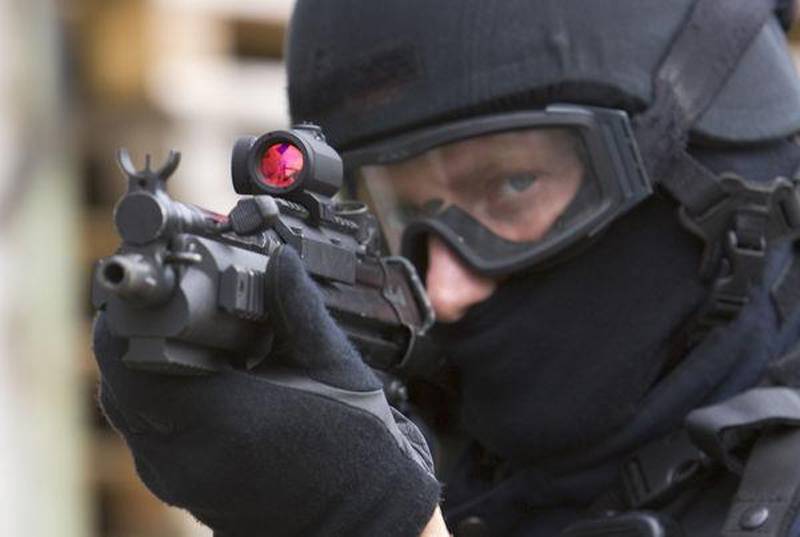
In unison with industry seeking to increase the lethality and accuracy of small-scale systems weapons, the armed forces are beginning to develop and implement optimized combat training regimes in accordance with modern requirements.
The integration of smart technologies and accessories to optimize the performance of weapons and ammunition systems has long been associated with large-caliber weapons capable of accepting sensory equipment and smart fuses that provide increased accuracy, reliability and mortality throughout the theater of operations.
In the field of small arms, however, the focus remains on phased updates of ammunition types and operating principles (a trigger mechanism against the trigger on the pistol market and a plunger mechanism against the classic direct supply of gas on the rifle market). However, the market is witnessing the growing interest of the user community in integrating smart technology in order to enhance the capabilities and improve the performance of pistols, assault rifles and light machine guns. The development is proceeding at a rather slow pace, despite the considerable interest shown by NATO and other coalition structures, to the design of completely evolutionary systems, for example, Powered Rail Adapter System, which was originally intended to become a centralized power hub. weapons optics and other surveillance, reconnaissance and control systems designed to increase situational awareness and impact.
Up to now, improvements in the so-called smart technology for existing pistols, guns and machine guns have been limited to integrating simple counters of shots, laser target designators and various aiming optics, ranging from collimator sights to solutions based on the ocular grid, although the development continues to reduce the size of fire control systems for sniper rifles and light fire support systems, for example, the promising XM25 Counter Defilade Target Engagement grenade launcher complex developed by the company Orbital ATK.
However, as the current request of the US Department of Defense for the MHS modular pistol (Modular Handgun System) shows, the integration of “smart” technology into the next generation small arms program remains limited.
At the moment, before choosing the three best applications for further testing, the US Army is in the process of analyzing existing systems. The most “smart” concept of the MHS program for the long term revolves around the requirements for modular handles of small, medium and large sizes, which will optimize the use of the chosen weapon system, since it can be used by most men and women.
However, this does not mean that the United States does not consider promising areas in the field of smart technology. In September, the 2015, a training battalion deployed at Quantiko Marine Corps, hosted the first demonstration of sniper training technology, which aimed to identify five areas of technology, including automatic fixed smart targets for small arms, automatic movable smart targets for small arms, rifles the next generation, the next-generation optics and upgrades for rifles already in service.
The results of this demonstration were not published, but it is clear that a number of technologies were considered, including the Computational Weapon Optic (CWO) concept from SPI Corporation, for which the contract was issued by the Advanced Defense Research Authority (DARPA) in August 2014. The program is implemented within the framework of the DARPA program, called Transformative Apps (TransApps - transformative applications or application programs), the purpose of which is to increase the capabilities of advanced divisions through the use of smartphone technology and related applications.
The clever technology for small arms over the past few years, even in the special operations community, has progressed much further than collimator sights and laser target designators, as this shooter of the American army demonstrates
A growing interest in the evolution of smart technology in small arms systems was demonstrated in April 2016, when the Ministry of Defense, the Ministry of Justice and the Ministry of National Security published a joint report defining a strategy to “accelerate the deployment of security technologies in response to the presidential memo weapons'.
This report, designed to help various ministries identify potential advantages, including advanced weapon safety technologies, defines general technical requirements for pistols into which smart systems can be integrated in the future. It is not surprising that such requirements are similar to those defined in the military and law enforcement community, not to mention the requirements defined in the MHS specifications.
As one of the experts who prepared this report noted, despite the limitations in size and form factor, not many changes will be required for a pistol or an assault rifle to be able to adopt such intelligent technology.
The report states: “In order to resolve these issues, the report calls on law enforcement structures to develop basic specifications that would define the operational requirements of these structures for any firearm with security technology. Having developed the basic specifications, federal and municipal law enforcement agencies will be able to convey to private producers what they expect from this technology. ”
However, the report also warns that "additional work is needed before this smart technology will be ready for widespread adoption by law enforcement agencies."
In addition, the report also points out the importance of integrating smart technology into firearms without compromising reliability, reducing service life and the accuracy that a sniper expects from his standard weapon.
The Ministries of Defense and National Security created a working group to identify operational requirements related to the integration of intelligent technology into modern operational space, and to prepare the relevant draft document.
The representative of the Special Operations Forces Command explained how the integration of smart technology could help the special forces in their activities.
He noted that smart technology, integrated into pistols, assault rifles, carbines, machine guns and other support weapons, as well as special handheld intelligence devices, could offer solutions ranging from "integrated signature management, from first shot to small-scale combat superiority divisions. All this together will significantly improve the quality of intelligence and information gathering, tracking and positioning, as well as information support operations; will allow to choose the right weapon commensurate with the situation, improve the control of the situation on the battlefield, give the fighters new, advanced energy supply systems. ”
The special forces' combat units are already entering service with the small LA-16u / PEQ handheld laser markers from L-3 Warrior Systems, which allow operators to illuminate objects with a coded laser beam compatible with the Band I / II band, to highlight them or transfer them to other systems of guided precision weapons.
The device in the form of a gun includes a mini collimator sight and a rechargeable battery. L-3 Warrior Systems does not confirm whether the new system will be integrated into a pistol or an assault rifle.
The Canadian Defense Research and Development Agency, together with the Canadian division of Colt, presented a project for a single modular assault rifle. The prototype weapon is being developed from 2009 year as part of the SIPES (Soldier Integrated Precision Effects Systems) project. It includes the NATO standard rifle itself, as well as an additional module — an 40-mm nadistvolny grenade launcher or an 12-caliber shotgun.
One of the most important features of the new Canadian assault rifle is the ability to use "smart" electronics. This includes optical-electronic sights and target position sensors, which can transmit information about the enemy to other fighters and commanders. It is planned to equip the rifle with an autonomous energy system and a data collection bus. The rifle's mass is significantly reduced due to the widespread use of polymers and the use of 5,56 caliber telescopic cartridges.
The Canadian Defense Research and Development Agency, together with the Canadian division of Colt, presented a project of a single modular machine gun (Soldier Integrated Precision Effects Systems) for the country's armed forces.
Clever logistics
Perhaps the most successful example of intelligent technology that is already in service with the Israeli army and is part of a program to improve complex technologies can be called the eLog system developed by Israel Weapon Industries (IWI). It is designed to “digitize” the capabilities of regular small arms and weapons of larger caliber, allowing them to significantly increase their accessibility thanks to more efficient maintenance and service methods.
Eliran Modan, IWI project manager at eLog, explained how such a system could help reduce the deployment of malfunctioning weapons systems, because sometimes a weapon’s malfunction can cost fighters their lives during lightning-fast operations, such as close combat in urban areas.
“You will never be able to foresee all the breakdowns, and they can happen at the most crucial moment. eLog is a small arms control system that improves combat readiness through advanced modern logistics. While preventive maintenance requires a transformation of thinking, we already see the market recognizing its great advantages and the willingness to implement large and necessary changes. ”
IWI Director Uri Amit agrees with his opinion, and said that eLog provides a comprehensive management and control solution for the armed forces and law enforcement officers seeking to obtain a tool for monitoring and recording accurate information about weapons.
As Amit explained, “Despite the widespread use of digital documentation in industry and research organizations today, the military was slow to switch to smart logistics systems. For the most part, the armies of many countries still use outdated documentation methods, including to track the life cycle and maintain their weapons. ”
“In order to overcome this critical lag, IWI has developed an eLog system. In order to help armies quickly and easily become digital and thus allow them to make decisions based on comprehensive, up-to-date information. The system will provide the military with invaluable and previously inaccessible information that will fully monitor and monitor spare parts and ammunition, as well as be able to send a warning signal in case of theft of official weapons. ”
Connecting the eLog mobile terminal to the Galil ACE assault rifle and reading data
The eLog system allows not only to improve the quality of control and inspection of weapons systems, to improve service efficiency and reduce costs, to obtain information on the consumption of ammunition and spare parts, but also to warn relevant structures about the attempted theft in a gun warehouse.
The system consists of a hidden sensory module embedded in a weapon, a terminal device in the form of a mobile terminal for collecting, processing and distributing necessary information, and software for managing all processes.
The touch module allows you to record in real time the work and characteristics of the weapon system, including user data (personal or arrow identification number); the number of shots and the time of the last shooting; last rate of fire (for automatic weapons). The system can be programmed in three operating modes: regular combat training, weapons in storage (a la car alarm) and, finally, combat mode, which allows you to turn off all radio frequency signals of the system itself.
The module is powered by a flat battery, which, depending on the intensity of use, may last for three years. He reports the number of shots fired, when the last shot was fired, and also confirms the serial number of the weapon. To record data that is transmitted over the air, the sensor module must be located within 40 radius from the user’s terminal device. The hardened mobile reader can communicate with the sensor module and record the corresponding data.
As stated in the company, “In the field, the gunsmith can collect sensor-recorded data from a weapon in order to obtain accurate information regarding its condition and take immediate action if necessary. The mobile terminal can simultaneously read data from a specific group of weapons. "
Finally, Armorer Management Software was developed to provide detailed information on the status and characteristics of individual weapons, which can then be used to develop recommendations for maintaining or repairing weapons or modifying them. A spokesman for IWI said that “the location of the stored weapon is constantly checked and, if the weapon is moved without permission or simply stolen, an alarm is sent. The system monitors the availability and movement of spare parts and ammunition consumption and records history weapons.
The eLog technology can currently be integrated into IWI's small-arms systems, including Tavor assault rifles, X95 (Micro Tavor) and Galil ACE, as well as Galil and DAN sniper rifles; Negev light machine guns; submachine guns Uzi; and the Jericho family of pistols.
Sniper perfection
The market for sniper weapons continues the rapid spread of smart technology and accessories aimed at increasing the lethality and accuracy of rifles. New systems are being introduced, including riflescopes, integrated and additional ballistic computers, anemometers and fire control systems (FCS).
Smart technologies include applications for smartphones. This is, for example, the Ballistics ARC program, which allows the sniper group commander to indicate with the stylus on the map the location of targets before issuing detailed ballistic data to a sniper based on current weather conditions and predetermined distances.
The American company TrackingPoint is promoting its RapidLok Target Elimination, integrated into its own M1400 sniper rifle caliber .338 Lapua Magnum with magazine-fed and longitudinal-sliding bolt. It allows the sniper to hit mobile targets with high accuracy, for example, vehicles moving at a speed of 32 km / h at distances up to 1280 meters. This decision appeared in the civil and defense markets in September last year.
Thanks to a built-in LMS with a laser barrel alignment system that tracks shock and vibration loads, as well as environmental data (wind direction and speed, air humidity), the shooter takes only 2,5 seconds to accurately capture the target and destroy it. The OMS has an x3 and x12 optical magnification, and a dual lithium-ion battery provides 3,5 hours of continuous operation.
The representative of the company TrackingPoint, John McHale, explained how such a sniper solution provides combat teams with high-precision firing at distances greater than the usual distances of trained snipers.
High precision sniper rifle M1400 with integrated tracking system developed by TrackingPoint
“M1400 provides undoubted advantages over any adversary in current and future conflicts, including the ongoing global war on terror. In combination with the M600 and M800 models, our units of the army and marines can get an undoubted superiority on the battlefield. Mortality at long distances is no longer solely the prerogative of trained snipers. With minimal training, any soldier can surely hit a target far beyond what is possible today for experienced snipers, ”says McHale.
Also available on the market are the Seeker S and Seeker M models from Newcon Optik; they were first shown at the Eurosatory 2016 exhibition in Paris. This family of SLA includes an integrated laser rangefinder, as well as the possibility of alignment of the aiming line for snipers of different categories. According to the company representative, the Seeker S or Seeker M variants allow the sniper to accurately measure the distance to the target, to 2 and 3 km, respectively, with subsequent shots automatically taking into account environmental conditions and shock and vibration loads. Both systems can be integrated into existing sniper rifles; they are mounted on the Picatinny rail at the “12 watch” position.
The Seeker S system includes a mountable universal laser range finder that is compatible with the standard NATO Picatinny rail, which is installed and calibrated with existing optical systems. According to the company representative, the device allows the shooter to find and track the target, as well as using its compass and inclinometer readings to get its exact GPS coordinates.
“The Seeker S system also incorporates a visible-range laser, which helps with alignment and adjustment. High strength materials along with ergonomic placement of controls make this hardened device efficient and user friendly. The range finder of the system operates at a wavelength of 905 nm, and the laser of the visible range at a length of 635 nm.
The system can also be connected via USB to the tablet with Android OS, allowing if necessary to bring information about the goals to all consumers on the battlefield. The system, powered by two CR2 batteries, weighs only 300 grams and measures 115x70x63 mm.
Meanwhile, according to the company, the Seeker M system has a maximum range of 3 km, the rangefinder works on the 1,55 nm wave, and the visible laser is also at the 635 nm wavelength. Despite its advanced capabilities, option M has the same dimensions, weight and power consumption as option S, plus it can also be connected to external networks through the external devices to distribute information about targets.
NATO special forces continue to modernize ballistic computers using anemometer technology, which makes it possible to improve the performance of the SLA and laser range finders. Examples include the integration of the Horus Vision ATrag ballistic calculator into end-user devices.
The representative of the special forces explained how such a process means the transition from the ATrag ballistic software to the solutions of Applied Ballistics, that is, the transition from the ballistic coefficient of the standard G1 model to the G7 model. This may lead to a change in the number of “clicks” corrections for the vertical displacement of the trunk.
The MESLAS MSA of the Israeli company Meprolight is popular with unrevealed customers. The smart weapon system has a maximum range of 2 km. It includes a sight with a magnification of x10 with a single-pulse laser rangefinder, a display, a communication connector for remote work, automatic corrections for elevation and real-time ballistic data updates. The total weight of the system is 1,85 kg, it is able to withstand shock and vibration effects and, according to a company representative, “extreme external conditions”.
Finally, in the field of ammunition, progress also remains rather sluggish, this also applies to the development of guided bullets for small arms. In 2015, DARPA completed its EXATO (Extreme Accuracy Tasked Ordnance) program, which aims to increase the distance of a sniper weapon.
At the end of 2016, there were reports from Russia regarding the development of ammunition for small arms conducted by the Advanced Research Foundation. According to the Deputy Director of the Foundation, development is underway, their goal is to create a guided bullet for sniper weapons capable of reaching the maximum range of 10 km. Apparently, this program was launched at the end of 2014 of the year.
However, in the US, the development of the promising XM2000 Counter Defilade Target Engagement (CDTE) grenade launcher complex is also continuing (right from the beginning of 25). This is evidenced by a request for proposals for the development of practical grenade launchers 25х40 ХМ1081, published by the Ministry of Defense. Ammunition fired from a hand-held grenade must have similar ballistic characteristics with an XM1083 High Explosive Airburst air exploding grenade.
Promising rocket launcher complex XM25 Counter Defilade Target Engagement
An industry expert predicts that multi-mode 25-mm grenades will go into service with the American army in a few years.
Despite the slow pace of integrating smart technology into small arms, it seems that the market is beginning to understand its potential, although significant obstacles remain. This is especially true of reducing the weight and size and energy-consuming characteristics, which could contribute to the successful integration of such technology into a weapon of a smaller form factor.
However, the armed forces appear to be exploring promising technologies in order to further reduce the size of the SLA. At present, many armed forces are following this path, developing “smart” weapons systems in an assault rifle form factor.
On the materials of the sites:
www.nationaldefensemagazine.org
www.nato.int
www.orbitalatk.com
www.darpa.mil
www.l3warriorsystems.com
iwi.net
www.tracking-point.com
www.newcon-optik.com
horusvision.com
fpi.gov.ru
www.drdc-rddc.gc.ca
www.pinterest.com
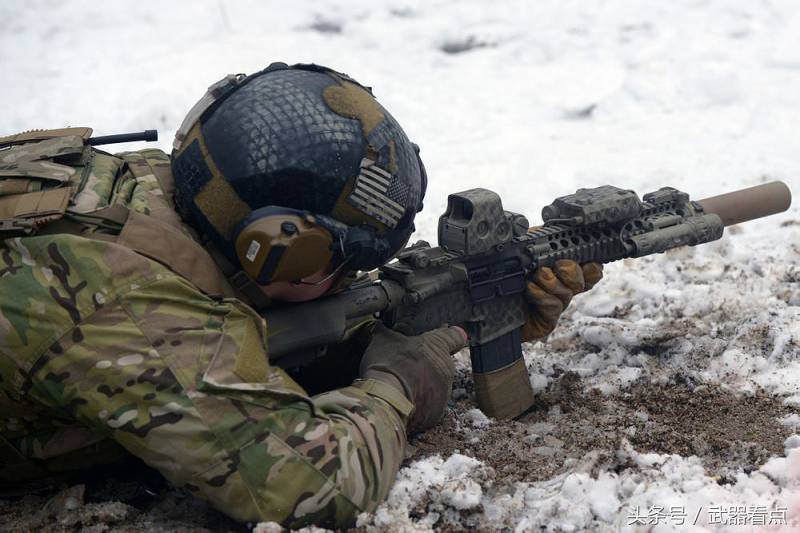
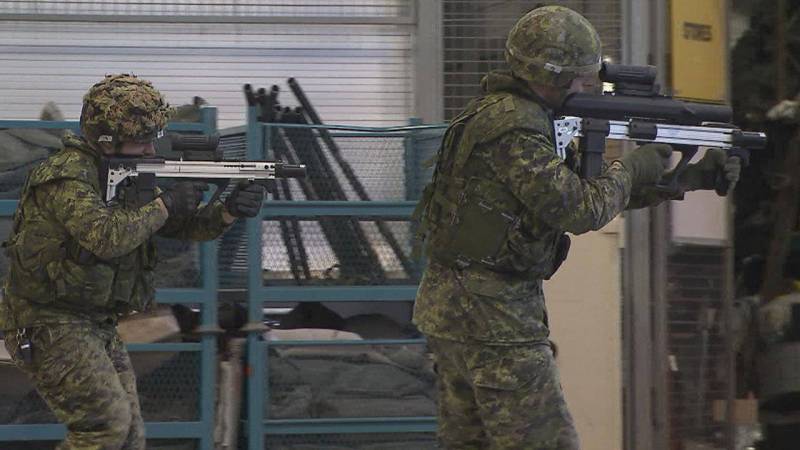
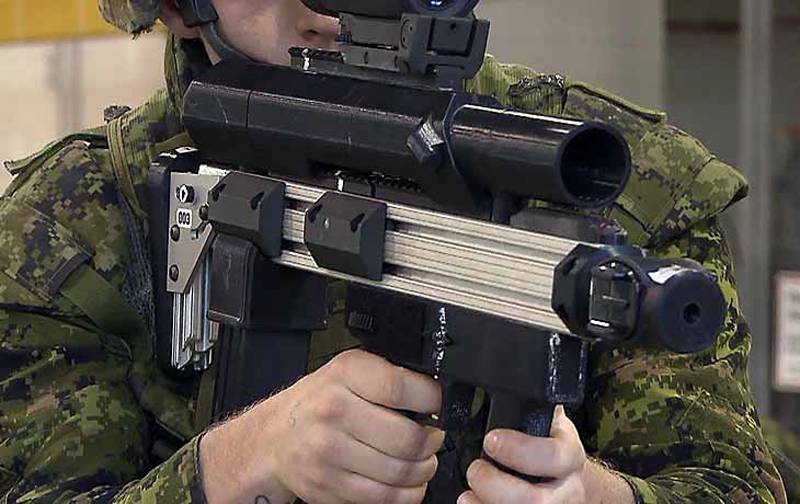
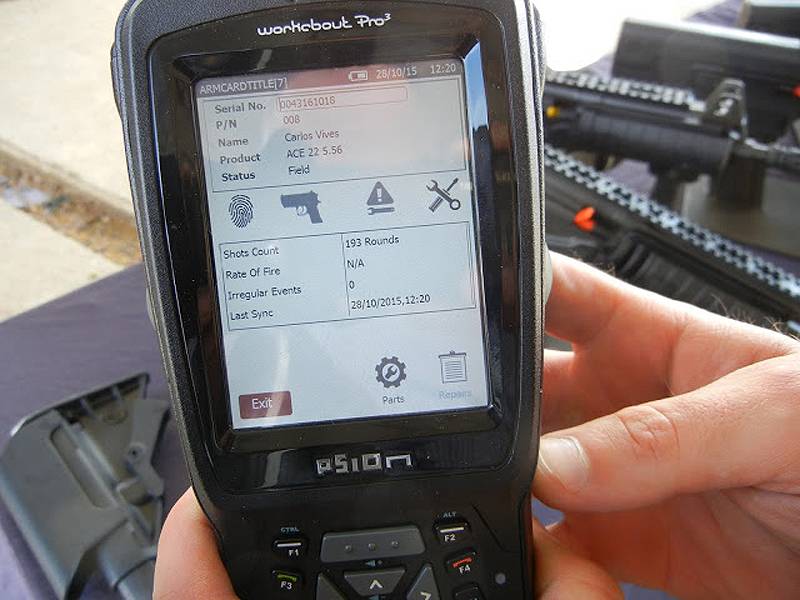
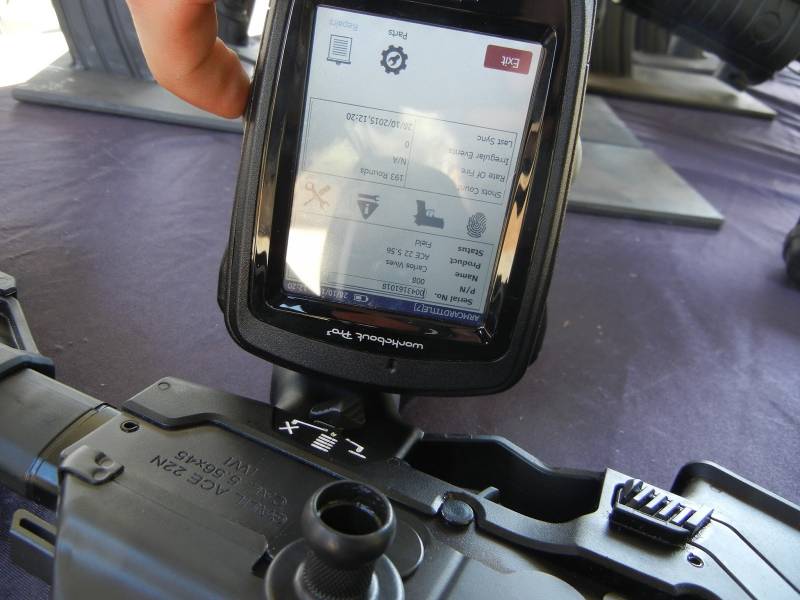
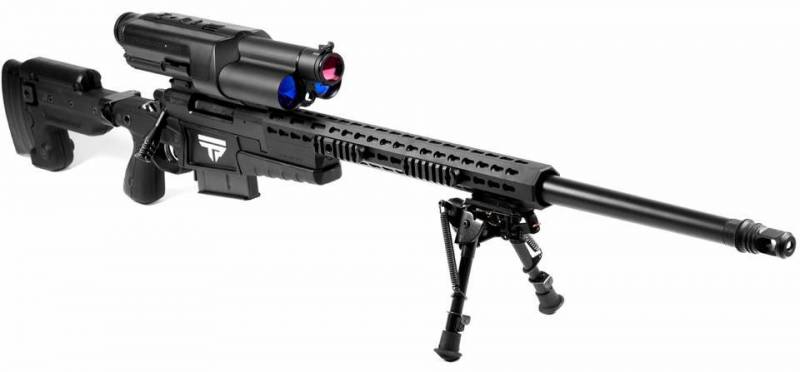
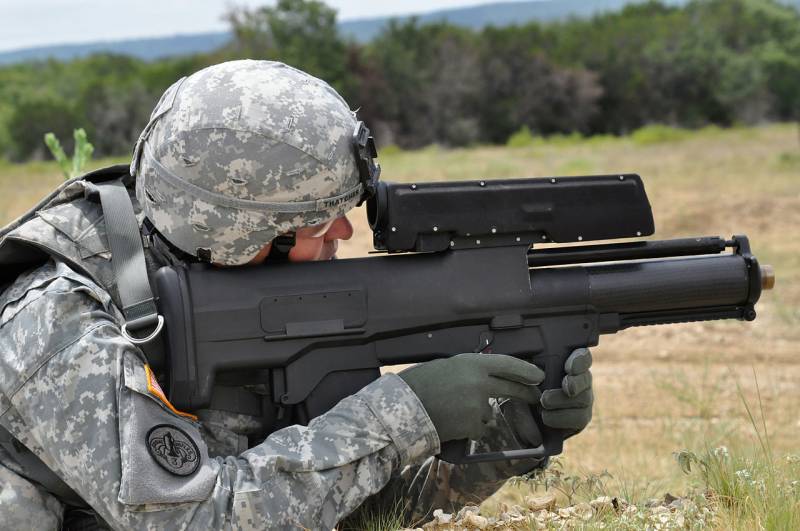
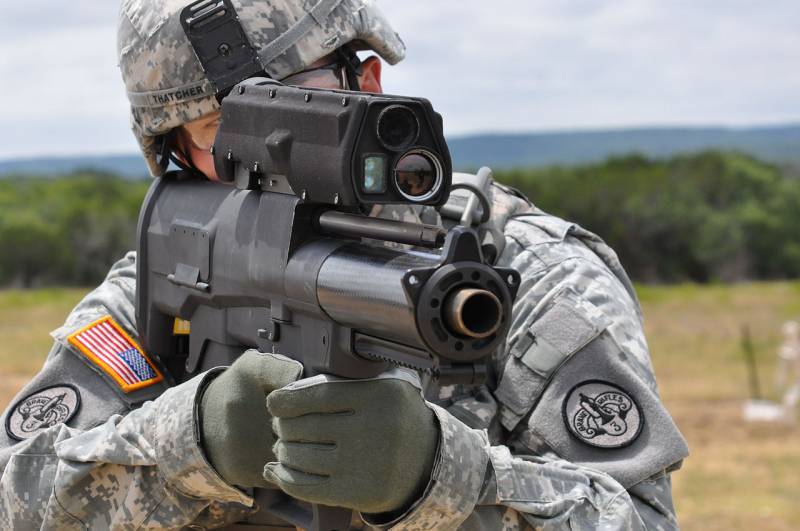
Information